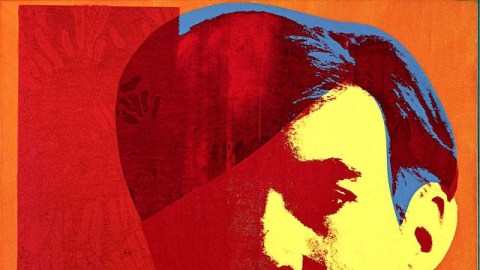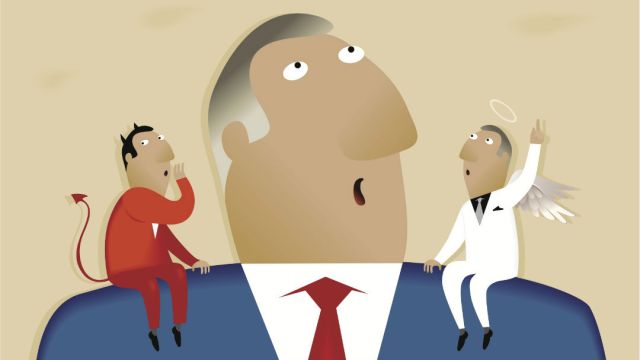What Would Warhol Do?

“They always say time changes things,” Andy Warhol once said, “but you actually have to change them yourself.” Warhol simultaneously embodied and changed his time—a combination that continues to work posthumously through artists working today. In a new exhibition at The Metropolitan Museum of Art titled Regarding Warhol: Sixty Artists, Fifty Years, the inheritors of Warhol’s legacy gather around to assess what hath Andy wraught for the past half century or so. In addition to being a great primer on Warhol’s art, Regarding Warhol acts as a whirlwind tour not just of what artists have done since the early 1960s, but also just how prevalent Warhol’s influence has been beyond the official art world. Regarding Warhol proves once and for all that it’s still Warhol’s world, and that we’re all just living and creating in it.
Independent curator Mark Rosenthal explains in his masterful catalog essay that he conceived this exhibition as “a series of visual ‘dialogues’ between [Warhol’s] work and that of other notable artists who embraced, elaborated, mined, or wrestled with his approach.” Rosenthal hopes that the viewer would come to see the “protean” work of the once-outsider Warhol as “a veritable mainstream from which many offshoots and points of view would be spawned and significant careers forged.” Although many scholars have remarked on Warhol’s influence, Regarding Warhol is the first full-scale exhibition to make direct connections between Warhol and succeeding artists by displaying those works side by side.
Regarding Warhol organizes the sometimes unruly threads of influence into five useful categories: “Daily News: From Banality to Disaster”; “Portraiture: Celebrity and Power”; “Queer Studies: Camouflage and Shifting Identities”; “Consuming Images: Appropriation, Abstraction, and Seriality”; and “No Boundaries: Business, Collaboration, and Spectacle.” Although many works threaten to seep over into other categories, Rosenthal’s design keeps everything as tidy as a study on influence could possibly hope to be.
Throughout his catalog essay, Rosenthal offers insightful, targeted readings of Warhol’s art while constantly keeping an eye on the bigger picture. Writing about Warhol’s portraiture and its position in contemporary practice, Rosenthal concludes that “[a]s usual,… Warhol proved to be both a synthesizer of earlier art and a beacon in terms of his example to others.” Rosenthal later remarks on how Warhol’s portraits of Elvis, Marilyn, Brando, and other icons often harked to earlier, more successful times in their careers and how this “conflation of eras creates a degree of pathos, like reading an obituary that is accompanied by a photograph from an earlier point in the subject’s life.” I especially enjoyed how Rosenthal concludes a discussion of Warhol’s Oxidation Painting (in which Andy asked men to urinate on canvases covered with metallic copper paint) and how that series mocked the seriousness of Jackson Pollock and Abstract Expressionism by saying that “[o]ne type of ‘drip’ painting was, thereby, replaced by another.” The Warholian ethos of playfulness and no boundaries exists not only in Rosenthal’s subject matter, but in his writing style, too.
When the catalog shifts to interviews conducted with some of the 60 Warhol-influenced artists represented by 100 works (which outnumber the Warhols in the show two to one), the debate over “Good Andy” versus “Bad Andy” takes over. Cady Noland compares Warhol’s approach to the dehumanizing effects of mechanization with that to Charlie Chaplin. While Chaplin warned of its dangers, Noland says, “Warhol fell madly in love with the idea. For Warhol, it was man who paled in comparison to the machine, not the other way around.” Warhol’s contemporary Alex Katz complains that Warhol stole freely from Katz’s work (“He didn’t borrow anything, it was stolen!) before admitting that “[g]ood artists steal, and he’s a good artist.” This immoral or amoral Andy appears also in the discussion of Warhol’s stance on death itself: “A person can cry or laugh… you have the choice.” “Bad Andy” remains the bane of all those who want to inject emotion, politics, or any other human concern into art rather than simply mirror the culture around them. “Bad Andy” also remains the template for contemporary artists who pursue filthy lucre over—almost to the exclusion of—loftier pursuits.
“Good Andy,” or perhaps more accurately, “Serious Artist Andy,” however, emerges from under the fright wig of self-promotion. If “Warhol and the sensibility he helped engender are somehow amoral or evil, it is certainly true that for a long time he was considered so,” Rosenthal counters. “But another way to understand Warhol is as a revolutionary who, applying these attitudes along with his camp sensibility, enforced a radical rejection of any orthodoxies concerning modern art—its qualities and aspirations.” Warhol “gave permission for artists to embrace fame,” photographer Jeff Wall says more simply. Or, as renegade Italian artist Maurizio Cattelan explains, “Warhol’s work is not about a specific decade or style; it’s about being contemporary, being now.” Look around you today at any kind of media, Cattelan asserts, and “you can always find something that’s both pure Warhol and perfectly timed for your present moment.”
The good, bad, and the ugly among the Warholian descendants sort themselves out neatly if you slot them into “Good” or “Bad” Andy. “Good Andy” lives on in artists who took Warhol’s approach to the cultural environment and tapped into the political and emotional he avoided. Cindy Sherman, Nan Goldin, Catherine Opie, Glen Ligon, and Ryan Trecartin belong to this category as artists who took Warhol and made him their own. Rosenthal shows how Warhol’s influence reached even China in the art of Wang Guangyi and other “Political Pop” artists in the 1990s who saw Warhol’s Mao paintings and made a closer connection than Warhol ever could, or would. These artists earn credit for exploring the shadowy side of Andy that can he hinted at in works such as his 1967 Self-Portrait (detail shown above), but always self-censored with a symbolic finger across the lips.
Alas, “Bad Andy” rules too much of today. Jeff Koons, Damien Hirst, and Takashi Murakami—the three-headed embodiment of all that seems wrong with contemporary art—threaten to suck all the oxygen out of the exhibition. Aside from that terrible troika, Warhol-gone-wrong’s legacy claims today’s overgrown tabloid culture (Interview Magazine begat People Magazine) and reality television (the screen tests of Warhol’s “Superstars” begat The Real Housewives, etc.). For every argument that Warhol helps us understand our world today, someone can make a counterargument that Warhol’s partly responsible for the mess, too.
One of the final entries in Rebecca Lowery’s catalogtimeline of “The Warhol Effect” mentions Rocky Horror Picture Show director Jim Sharman’s “cinematic séance” held in February 2012 twenty-five years to the minute of Warhol’s passing. Regarding Warhol: Sixty Artists, Fifty Years may not qualify as a séance, but it surely raises the specter of the man and his work and how it haunts us still in so many ways. Early reviews of the exhibition have criticized it for going too far or not far enough—almost as if viewing totally different exhibitions. Both the exhibition and the catalog will challenge and/or enrage you, depending on your prejudices, but at the very least they’ll get you in the spirit of Warhol, whose “15 minutes“ stretch on and on, whether we want them to or not.
[Image:Andy Warhol. Self-Portrait (detail), 1967. Acrylic and silkscreen on canvas.]
[Many thanks to The Metropolitan Museum of Art for providing me with the image above and other press materials related to the exhibition Regarding Warhol: Sixty Artists, Fifty Years, which runs through December 31, 2012. Many thanks also to Yale University Press for providing me with a review copy of the catalog to the exhibition.]




